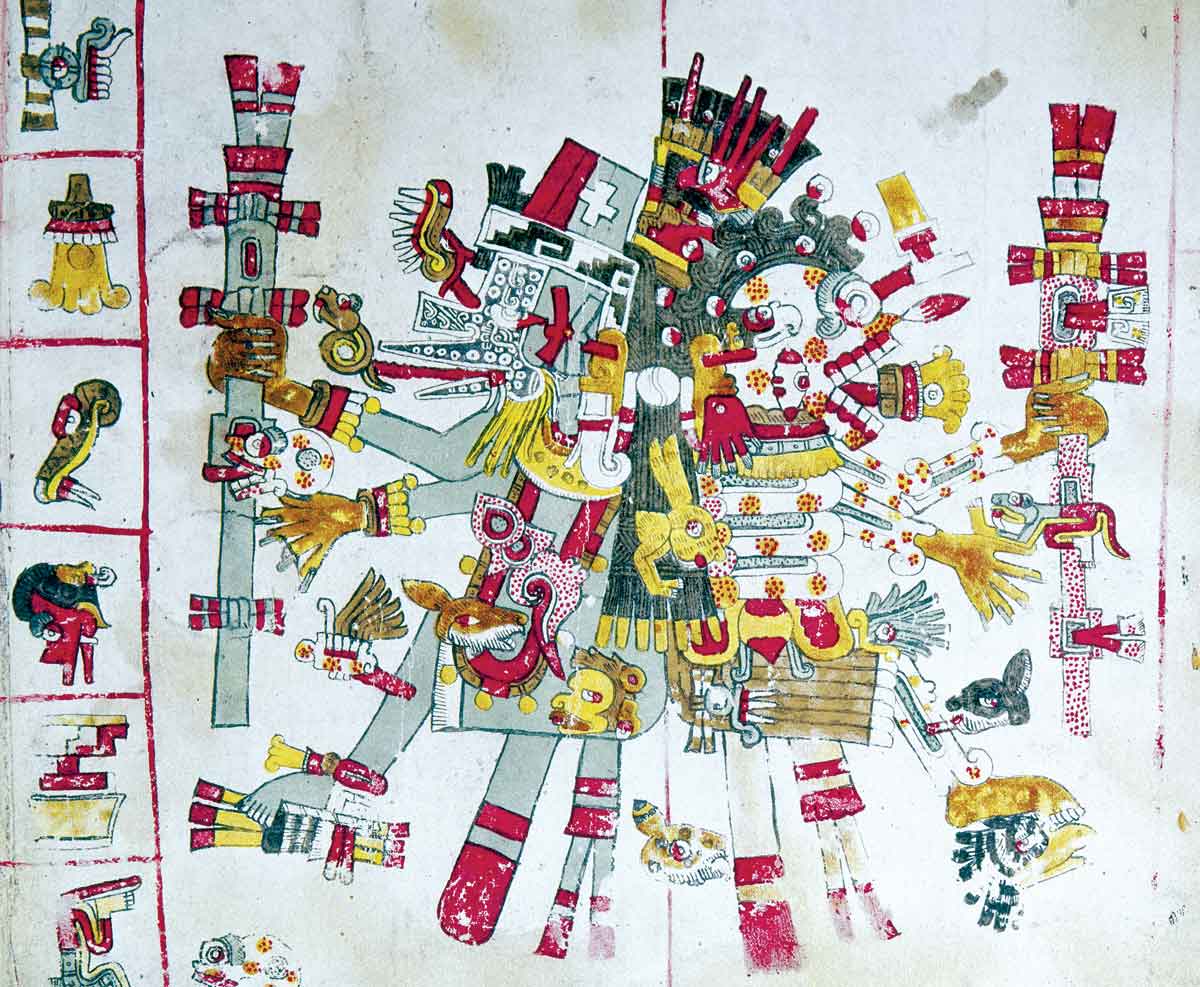The Aztec God of the Dead - 2 minutes read

The skeletal figure of Mictlantecuhtli, Aztec god of the dead, raises his arms, ready to tear his victims apart. To his left stands Ehecatl, god of the wind, an aspect of the creator serpent-god Quetzalcoatl. Mictlantecuhtli, King of Mictlan, inhabits a windowless home shared with his wife, Mictecacihuatl, and an assortment of bats, owls and spiders. They were placed there soon after Quetzalcoatl and Tezcatlipoca created the world. They are mirrored by Ometecuhtli and his female counterpart Omecihuatl, the givers of light. Mictlantecuhtli’s task was to divide the dead into those who had died ‘normal’ deaths (old age, disease); ‘heroic’ deaths (in battle, childbirth); and those considered ‘unheroic’.
This image is taken from the Codex Borgia, or Codex Yoalli Ehecatl, which was discovered in 1805 by the scientist Alexander von Humboldt among the possessions of the 18th-century cardinal, Stefano Borgia, and then elucidated in part by the great German ethnohistorian Eduard Seler.
It consists of one piece, 34 ft long, folded like a concertina, made of 39 sections, each just over 10 and a half square inches in size. It is made of tanned deer skin, covered with a layer of stucco to hold the paint. Created in Pueblo, Mexico just before or just after the Conquest of 1519-27 – scholars differ – it appears to be a tonalamatl, or ‘almanac of destiny’, which charts omens related to the prospect of good or bad harvests according to the Aztecs’ 260-day calendar, the tonalpohnualli. It is kept in the Vatican’s Apostolic Library.